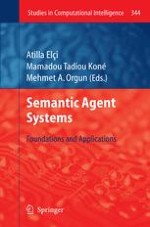2011 | OriginalPaper | Buchkapitel
Semantic Architecture for Human Robot Interaction
verfasst von : Sébastien Dourlens, Amar Ramdane-Chérif
Erschienen in: Semantic Agent Systems
Verlag: Springer Berlin Heidelberg
Aktivieren Sie unsere intelligente Suche, um passende Fachinhalte oder Patente zu finden.
Wählen Sie Textabschnitte aus um mit Künstlicher Intelligenz passenden Patente zu finden. powered by
Markieren Sie Textabschnitte, um KI-gestützt weitere passende Inhalte zu finden. powered by
Robot software tend to be complex due to management of sensors and actuators in real time facing uncertainty and noise and the more complex tasks to realize in different situations like the human robot multimodal interaction task. This implies a large amount of events to exchange and to process. Robotics intelligent Architecture must be well-conceived to reduce this complexity. Information must be well organized and meaning of situation must be quickly extracted to take decision. Meaning of the situation and situation refinement require the development of a description of the current relationships among entities and events in the environment context. Extraction of meaning and ontological storage of events are very important for interpretation. Human Robot Interaction involves three main parts: awareness and acquisition context, interpretation context and execution context. They define scenarios of multimodal interaction to realize the precondition part called
fusion
, and the post condition part called
fission
. In the aim to solve the above problem, we have designed a new architecture using semantic agents and services. We propose in this chapter, simple and efficient components to any multimodal interaction architecture requirements and universal, compliant and generic architecture using a common knowledge representation language. Our framework is designed for high level data fusion, fission and components management. We don’t focus on hardware parts, sensors and actuators. Semantic knowledge is expressed in domain ontologies that permit to extract the situational meaning about any entities in the environment, monitor and adapt the architecture if necessary. In this objective, we apply a narrative knowledge representation language to the memory of agents in a distributed network. We also present the structure and extension of the network for agents to act in ubiquitous environments.
